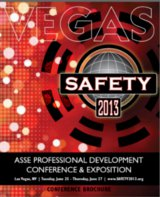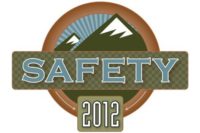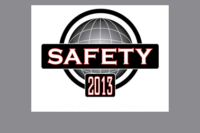 Two sessions this week at ASSE’s Safety 2013 took up the subject of zero injury goals. The first was presented by Tom Krause Ph.D., the founder of BST who now works as an independent consultant in Ojai, CA after selling the company to Dekra of Germany. Tom posed the question: “Are We on the Path to Zero or Are We Kidding Ourselves?“
Two sessions this week at ASSE’s Safety 2013 took up the subject of zero injury goals. The first was presented by Tom Krause Ph.D., the founder of BST who now works as an independent consultant in Ojai, CA after selling the company to Dekra of Germany. Tom posed the question: “Are We on the Path to Zero or Are We Kidding Ourselves?“
Among his points:
● Even the best supposed corporate safety and health programs are failing with their core safety systems
● We deceive ourselves in safety by hanging onto low recordable injury frequency rates
● Incident investigations are frequently of poor quality
● Organizations with the best overall safety and health performance scores actually score poorly in terms of senior leadership and culture
● This deception on the part of industry is a precursor to catastrophe
A more stinging critique of safety’s “quest for zero” was offered by Shawn Galloway of ProAct Safety, The Woodlands, TX, in his session: “Zero Incident Goals Create Risk-Taking Cultures: Learn to Measure What Matters.”
Average versus excellent
Zero incident programs and goals are the desire of average safety cultures, not excellently-performing ones, says Galloway. He claims how goals are framed is the difference in excellent performance and excellent results; and that a framework to achieve sustainability is the biggest differentiator.
Galloway argues: “It’s a wonderful statement and a bit of a cliché to say that ‘Safety is everyone’s responsibility.’ It has lost its meaning because most organizations have not effectively outlined the aforementioned safety leadership and hourly employee roles, and are rarely held accountable for expected behavioral performance in a timely and consistent fashion to make a substantial difference. Ultimately, the senior executives are responsible for both culture and performance in all facets of the business. This too, is reality.”
Others at Safety 2013 made their case for “deceptive” safety thinking:
Compliance kills innovation
Canadian consultant Corrie Pitzer: “The traditional focus on the human, in the context of safety, is that the human being is the weak link, the hazard, the ‘error maker.’ Imagine a world where we have eliminated risk-taking behavior:
- Nobody takes a step out of the prescribed actions for a job…
- Nobody questions whether the task should be done otherwise…
- Nobody challenges the safety procedures
- Nobody looks for an alternative way to execute a task
- Nobody tries to change the job in any way
“That is what an organization would look like if it has achieved full compliance – and full compliance is the ideal/goal vision of any safety behavioral program. But in achieving this we have also managed to kill the ability of the organization to innovate and to continuously improve. We have just gone against everything that makes human beings, be they workers, supervisors or managers, the best resource of all. It is the human factor that makes organizations great, because we are able to do things in ways that nothing else can.”
Eliminate goal-setting
Dr. E. Scott Geller: “Included among W. Edwards Deming’s 14 points for quality transformation are ‘eliminate management by objectives, eliminate management by numbers, numerical goals…eliminate slogans, exhortations, and targets for the work force asking for zero defects.’
“Does this mean we should stop setting safety objectives and goals? Should we stop trying to activate safe behaviors with signs, slogans, and goal statements? Does this mean we should stop counting OSHA recordables and lost-time cases, and stop holding people accountable for their work injuries?
“Yes, if you take Deming’s point literally. But I think Deming meant we should eliminate ‘goal setting, slogans, and work targets’ as they are currently implemented. Dr. Deming was not decrying the principles of goal setting, management by objectives, and activators; rather, he was criticizing the current corporate use of these principles. Substantial research supports the use of objective goals and activators to improve behaviors, if behavior-change principles are applied correctly.”




